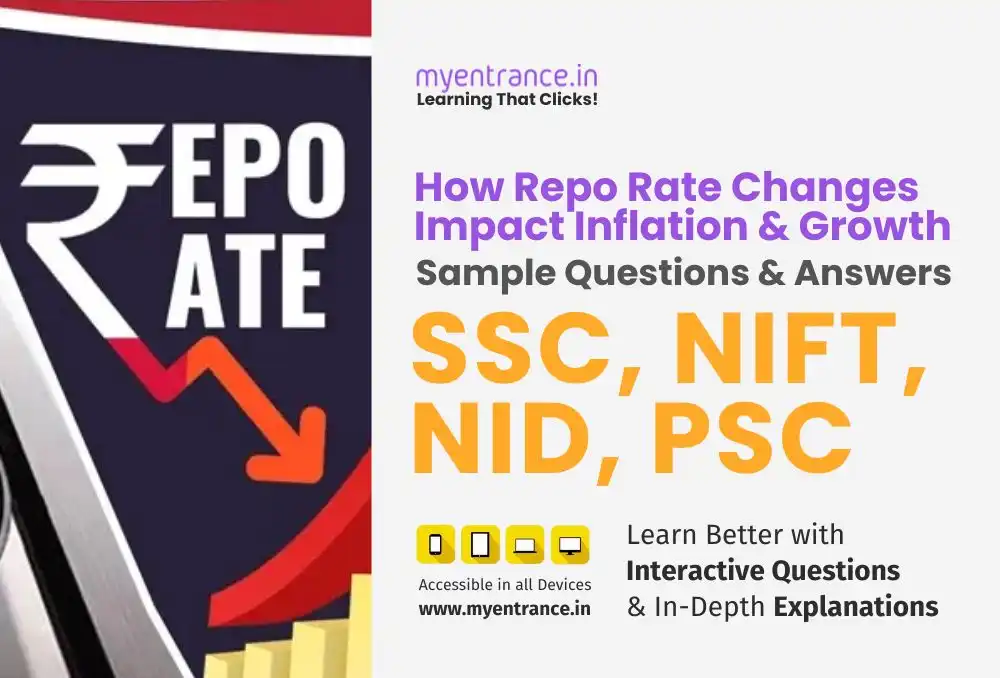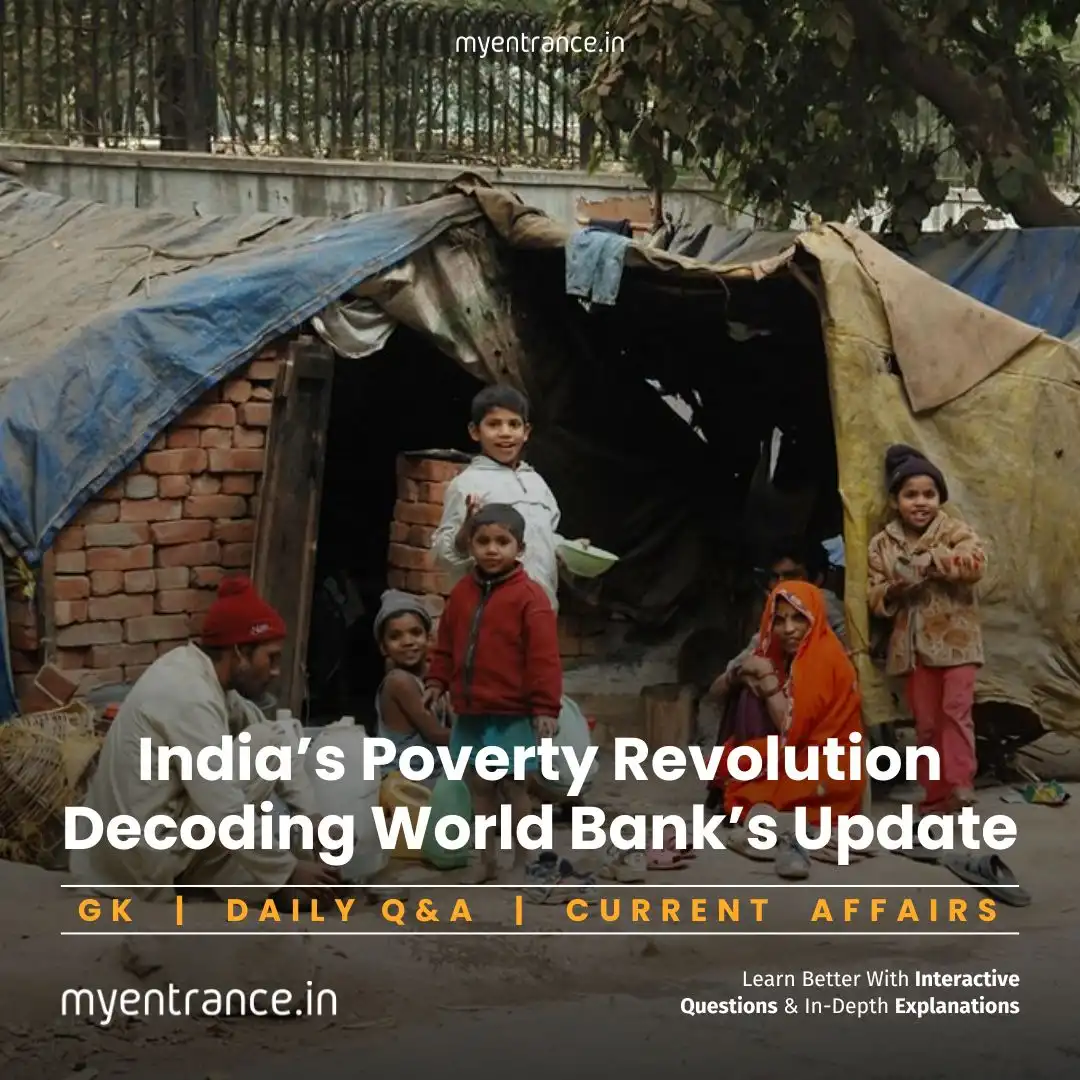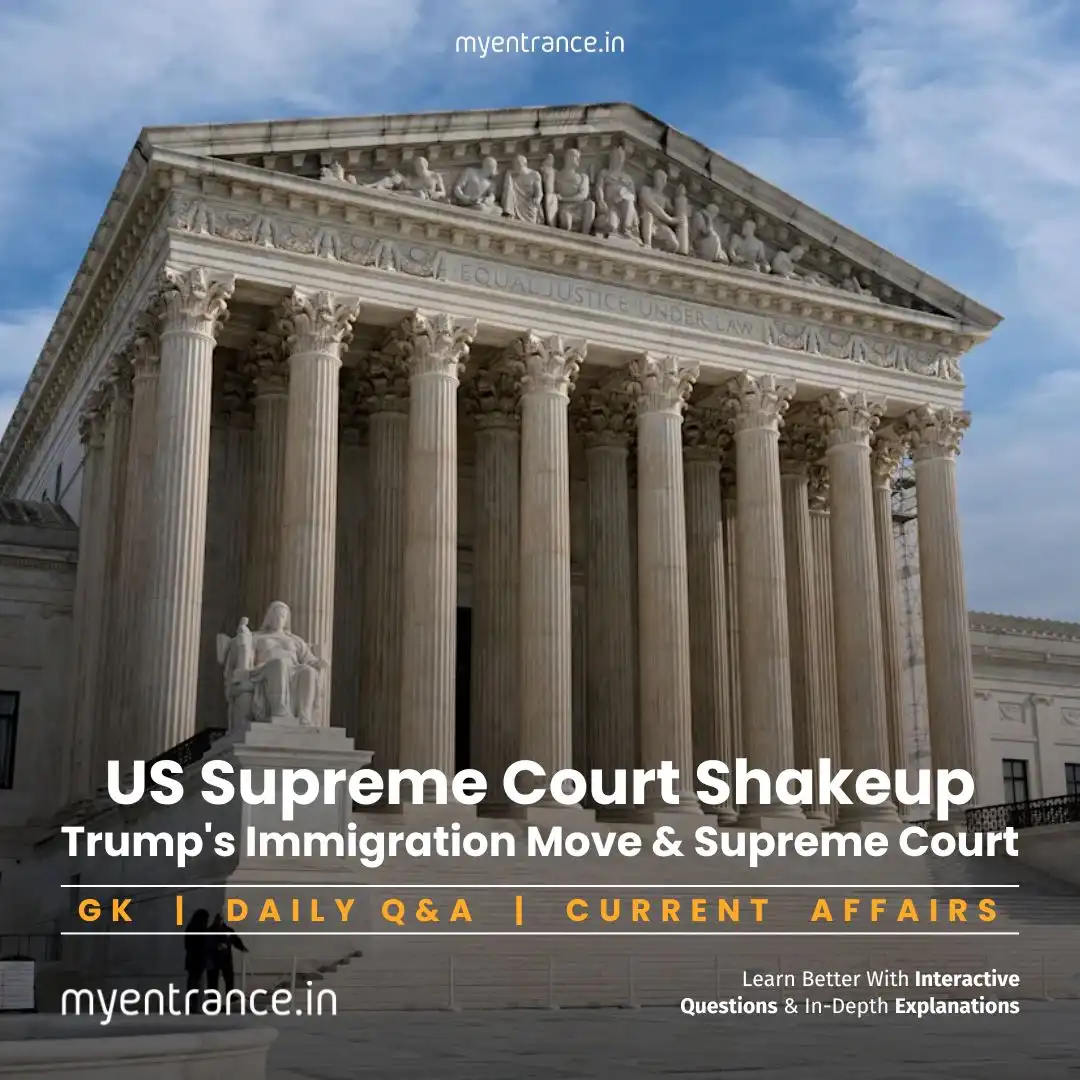Select Language
RBI’s Rate Cut Decoded: How Repo Rate Changes Impact Inflation & Growth: Sample Q&A
RBI’s recent 50-bps repo rate cut signals aggressive moves to boost India’s economy. Understanding these monetary tools is vital for SSC, PSC, and banking exams—where questions on inflation control frequently appear.
Why RBI’s Rate Cut Matters
In June 2024, RBI’s Monetary Policy Committee (MPC) slashed the repo rate by 50 basis points to 5.5%—exceeding market expectations. Simultaneously, it reduced the cash reserve ratio (CRR) by 100 bps to 3%, injecting ₹2.5 lakh crore into the banking system. This dual move aims to revive economic growth amid slowing inflation.
Key Monetary Policy Instruments Explained
1. Repo Rate & Reverse Repo Rate
Repo Rate: Interest RBI charges when banks borrow short-term funds. Reducing it (like in 2024) lowers loan rates, spurs spending/investment, and boosts growth.
Reverse Repo Rate: Interest RBI pays banks for parking surplus funds. Raising it discourages lending, curbing inflation.
2. New-Age Tools
Standing Deposit Facility (SDF): Replaced fixed reverse repo in 2022. Acts as the floor rate for overnight uncollateralized deposits.
Marginal Standing Facility (MSF): Emergency overnight borrowing window for banks at 25 bps above repo rate.
3. Liquidity Managers
Liquidity Adjustment Facility (LAF): Daily window for banks to borrow/park funds via repo/reverse repo using G-Secs as collateral.
Open Market Operations (OMOs): RBI buys/sells government securities to adjust long-term liquidity.
4. Reserve Ratios
Cash Reserve Ratio (CRR): Mandatory cash reserves (as % of NDTL) banks hold with RBI.
Statutory Liquidity Ratio (SLR): Reserves in liquid assets (gold, govt bonds).
Flexible Inflation Targeting (FIT): RBI’s North Star
Since 2016, RBI legally targets 4% CPI inflation (±2%) under FIT framework. This five-year mandate (renewed in 2021) anchors policy decisions:
Rate hikes to cool inflation (e.g., during supply shocks).
Rate cuts to stimulate growth (e.g., 2024’s aggressive reductions).
5 Sample Q&A for Exam Prep
Q: How does cutting repo rate control economic slowdown?
A: Lowers borrowing costs → boosts business investment & consumer spending → stimulates demand and growth.
Q: Why is MSF called a ‘penalty rate’?
A: Banks use it only during acute liquidity crises, paying 25 bps above repo rate—making costlier emergency borrowing.
Q: How does CRR reduction (like 2024’s 100 bps cut) help banks?
A: Releases locked funds, increasing lendable resources. Example: ₹2.5 lakh crore infusion boosted loan capacity.
Q: What is FIT’s legal basis?
A: Amended RBI Act (2016) mandates 4% CPI inflation targeting, reviewed every 5 years (last renewal: 2021).
Q: How do OMOs fight inflation?
A: RBI sells G-Secs → absorbs excess money from markets → reduces cash flow → lowers demand-driven inflation.
Most Predicted Questions
Comprehensive study materials, Expert-guided tips & tricks, Mock tests and instant results.
Start your SSC, NIFT, NID, FDDI, PSC journey today with MyEntrance, your ultimate online coaching platform.








